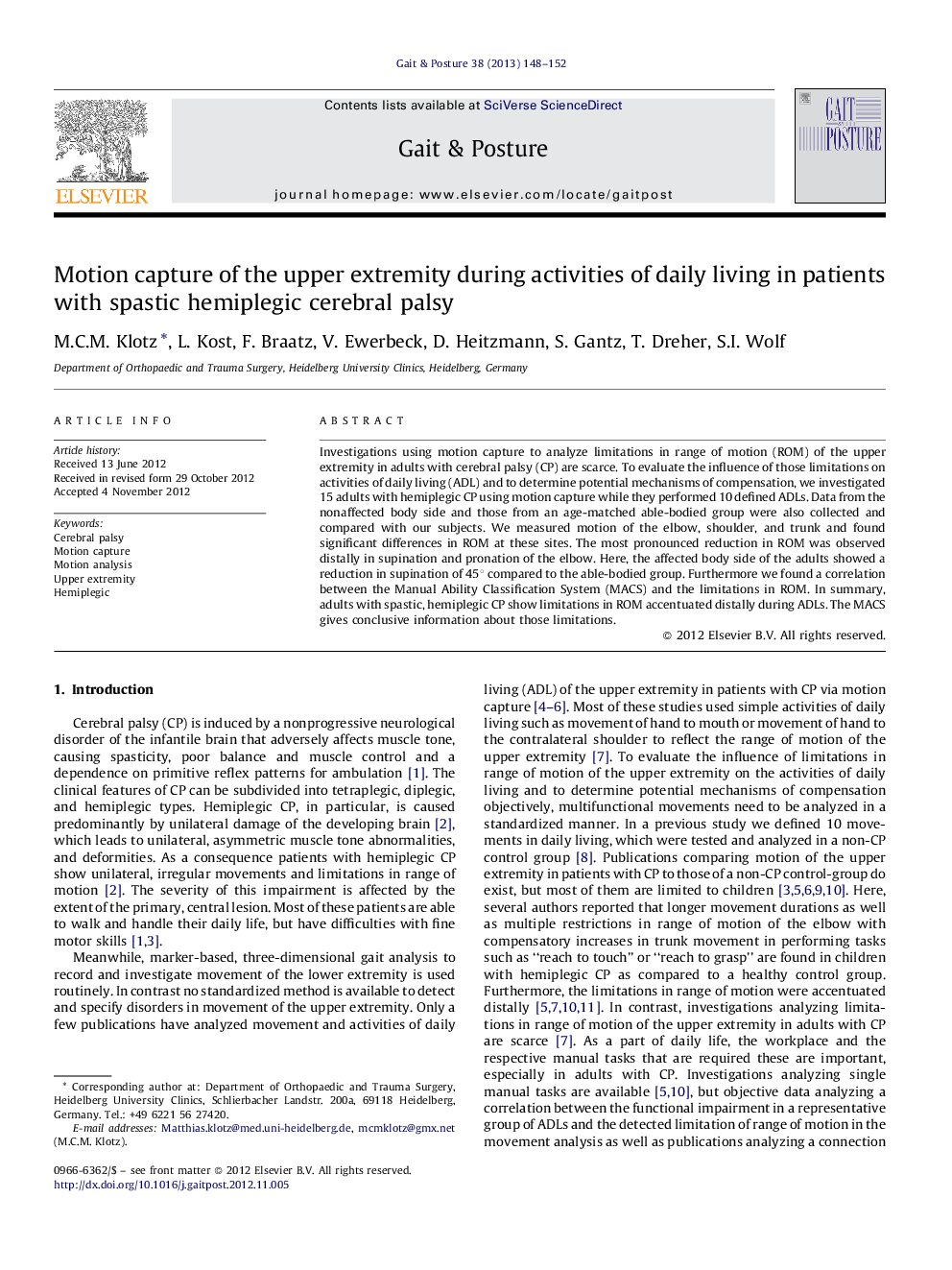| Article ID | Journal | Published Year | Pages | File Type |
|---|---|---|---|---|
| 6207532 | Gait & Posture | 2013 | 5 Pages |
Investigations using motion capture to analyze limitations in range of motion (ROM) of the upper extremity in adults with cerebral palsy (CP) are scarce. To evaluate the influence of those limitations on activities of daily living (ADL) and to determine potential mechanisms of compensation, we investigated 15 adults with hemiplegic CP using motion capture while they performed 10 defined ADLs. Data from the nonaffected body side and those from an age-matched able-bodied group were also collected and compared with our subjects. We measured motion of the elbow, shoulder, and trunk and found significant differences in ROM at these sites. The most pronounced reduction in ROM was observed distally in supination and pronation of the elbow. Here, the affected body side of the adults showed a reduction in supination of 45° compared to the able-bodied group. Furthermore we found a correlation between the Manual Ability Classification System (MACS) and the limitations in ROM. In summary, adults with spastic, hemiplegic CP show limitations in ROM accentuated distally during ADLs. The MACS gives conclusive information about those limitations.
⺠The ROM of 10 defined ADLs was measured by using motion analysis in adults with hemiplegic CP and able-bodied subjects. ⺠We correlated the functional handicap in the MACS and the Disability of Arm, Shoulder, and Hand Index (DASH). ⺠Compensatory mechanisms resulting from limitations in range of motion were determined. ⺠During ADLs adults with hemiplegic CP show limitations in range of motion, which are pronounced distally. ⺠Compensatory mechanisms like an increased trunk movement as well as a strong correlation with the MACS were identified.
